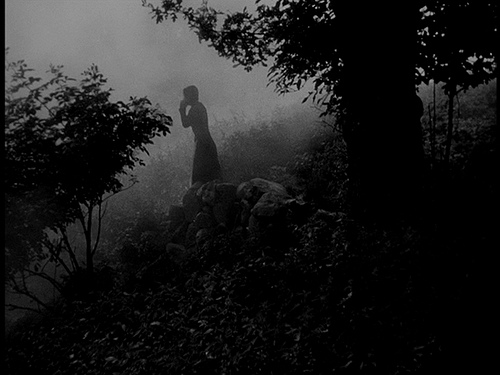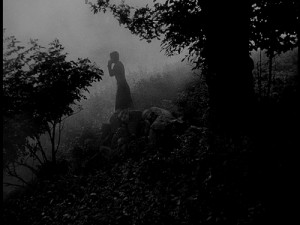Carl Theodor Dreyer (1889-1968) is one of the great masters of the cinema, yet his reputation rests largely on just five of his films. I myself dissent from the praise one of them, La Passion de Jeanne d’Arc, often receives. (I find the numerous close-ups of Joan of Arc weeping very much overdone.) In my opinion, one of Dreyer’s best films, rivalled only by his last film Gertrud, is Day of Wrath (Vredens Dag), made in 1943 when Denmark was under German occupation.
Based on a play, the film takes place in the seventeenth century. An old woman, Herlofs Marte (Anna Sviekier), is accused of witchcraft by church elder Laurentius (Olaf Ussing). Before she is executed, Herlofs Marte curses Laurentius, who dies not long afterward.
The parson, Absalon Pedersson (Thorkild Roose), is necessarily involved in the witch trial, but his involvement in the issue of witchcraft goes further: the mother of his (much younger) wife, Anne (Lisbeth Movin), was suspected of being a witch, but Pedersson did not pursue the matter because of his desire to marry Anne. Anne and her stepson Martin (Preben Lerdorff Rye), wind up falling in love, and a domestic crisis ensues, with the possibility of magic very much present.
The imagery—often sparse and stark except for exterior shots during Martin and Anne’s lover’s idyll—greatly adds to the grim intensity of the film. Dreyer’s camera takes are deliberately somewhat longer than usual, so the viewer has more time to absorb the images. This is a powerful film, a tragedy about witchcraft, passion, and self-understanding.
For more information or to purchase Day of Wrath, follow this link.


